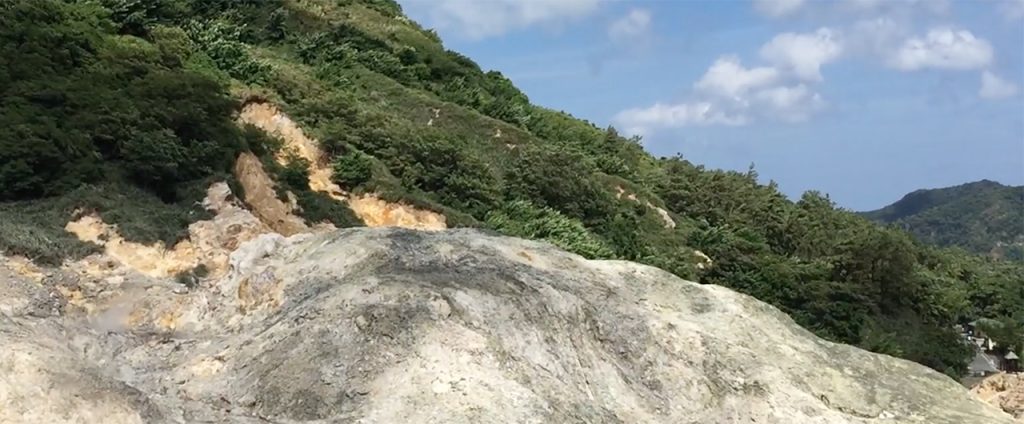You can smell it before you see it. The distinctive, rotten egg-like odor that emanates from St. Lucia’s “drive-in volcano.”
Along with the Pitons, it’s the former capital of Soufriere’s most-visited attraction, drawing as many as 1,500 curious visitors on days when cruise ships are in port. Most of them will take the 15-minute guide tour of the volcano (which is, more accurately, a caldera or collapsed volcanic crater), learning along the way that the it last erupted in 1766 but that scientists predict another pyroclastic event sometime within the next century. They’ll listen attentively as they’re told that the caldera is seven miles wide; that an agricultural community of around 80 people live within its borders; and that St. Lucia used to export the sulfur extracted form this spot all the way to France, where it was used to make gunpowder, matches and pharmaceuticals.
Then, invariably, at least one person in the group will ask if they can go down and walk onto the lunar-like surface of the caldera, where plumes of steam escape from a forbidding landscape of jagged chalky-looking rocks. And that’s when their guide will tell them the story of Gabriel’s Hole, and the catastrophic event that happened there 29 years ago. Listen in as tour guide Angel shares the tale.
— Sarah Greaves-Gabbadon, CJ Travel Editor
